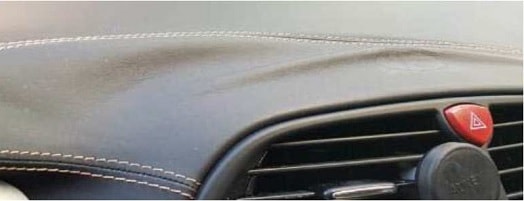
The Glue Talk Blog

One of the fastest-growing trends in the Automotive Interior Trim market is the use of PVC and TPO skins. These skins are becoming popular because they offer fantastic benefits, including a long lifecycle, more sustainability, and freedom of design. The substrates, TPO (thermoplastic polyolefin) and PVC (polyvinyl chloride), form the scratch-resistant skins for different parts of a vehicle’s interior trim, including dashboards and instrument panels. Despite the benefits, PVC - TPO skins face several key bonding challenges that require a high-performance reactive hot-melt adhesive solution.
I recently spoke on this trend, its challenges, and how my team at H.B. Fuller responded to market demand to develop a cutting-edge solution for our customers at the 2019 SPE® Automotive TPO Engineered Polyolefins Global Conference.
Defining the Challenges - Heat, Hydrolysis and Plasticizers
The first challenge is working with the PVC. Bonding a hard-but-flexible substrate like a PVC composite to a carrier is difficult due to stretching, rigid shape memory and the presence of plasticizers in the material.
To be effective over the life of an automobile, an interior trim adhesive must also withstand repeated cycles of heat, cold and humidity. Increasing customer demands for heat and hydrolysis resistance have become a major obstacle to overcome. Hydrolysis is a degradation of the adhesive bond caused by humidity. It causes warping of the trim’s appearance.

Delamination of IP especially in humid and warm places like Florida or Texas
Three years ago, market-grade reactive hot-melt adhesives needed to be able to withstand a temperature of 90 degrees Celsius. Now, the required grade is up to 120 degrees Celsius. Think about a vehicle parked in the hot and humid climate of Texas or Florida for many hours; it’s going to need adhesive products in the interior trim that can withstand extreme temperatures and humidity. Up to this point, standard reactive hot melt adhesives haven’t sufficiently made the grade or prevented hydrolysis in PVC - TPO skins.
Three Solutions in One
Partnering with our customers across the globe to proactively respond to market trends and commercialize our game-changing solutions sets H.B. Fuller apart from the field. My team of expert research scientists saw this increasing demand for a higher-performing product three years ago and proactively began engineering a solution for our customers.
We engineered a reactive hot-melt adhesive using special additives and raw materials that features higher-grade hydrolysis, heat, and plasticizer resistance to offer three solutions in one for market demands. Swift®lock 2039 performed five times better than a standard hot-melt adhesive in a rigorous climate cycle test, yielding excellent bonding results at the required 120 degrees Celsius grade. It also revealed increased plasticizer resistance when used in composite with PVC. Swift®lock 2039 is currently in development at our factory in Germany and will soon be rolled out globally.
H.B. Fuller is continually moving the needle when it comes to product innovation, research, and technology, adding value to our customers when we see a need. Our automotive interiors team is ready to help you solve your composite bonding challenges today. Learn more about our Automotive Interior adhesive solutions.
Blog Categories
Blog Categories
Archive
- 2024
- 2023
- 2022
-
2021
- January (3)
-
February (7)
- Celebrating Exceptional Service During COVID-19 Complications
- Cyanoacrylates: What They Are and What They Do
- Innovative two-shot bookbinding adhesive
- Make a Difference 2020
- Problem Solving: Paper Straws in Drinking Beverages
- Stronger straws sustainable future
- Substances of Interest in Disposable Absorbent Hygiene Products
- March (4)
- April (4)
- May (4)
- June (5)
- July (2)
- August (5)
- September (2)
- October (1)
- November (3)
- December (2)
-
2020
- January (4)
- February (2)
- March (3)
- April (4)
- May (3)
-
June (7)
- Community Support in the Era of Coronavirus
- HBFuller Employee Creates Face Shields with 3D Printer
- Improved Packaging Integrity and Greater Customer Satisfaction
- Liquid-Resistant Paper Straws
- What is a Sealant?
- What Is the Future of Commercial Disinfectants?
- Winning over consumers with e-commerce packaging solutions
-
July (6)
- Employees Take Action to be Part of Healing and Growth
- Gain a competitive advantage with packaging adhesive solutions
- HB Fuller Company Foundations Commitment to Communities
- Packaging Solutions for the South African Agriculture Market
- Supporting Organizations That Provide STEM Education for Youth
- Where Does Sustainability Stand Amid COVID-19
- August (3)
- September (2)
- October (4)
- November (2)
- December (4)
